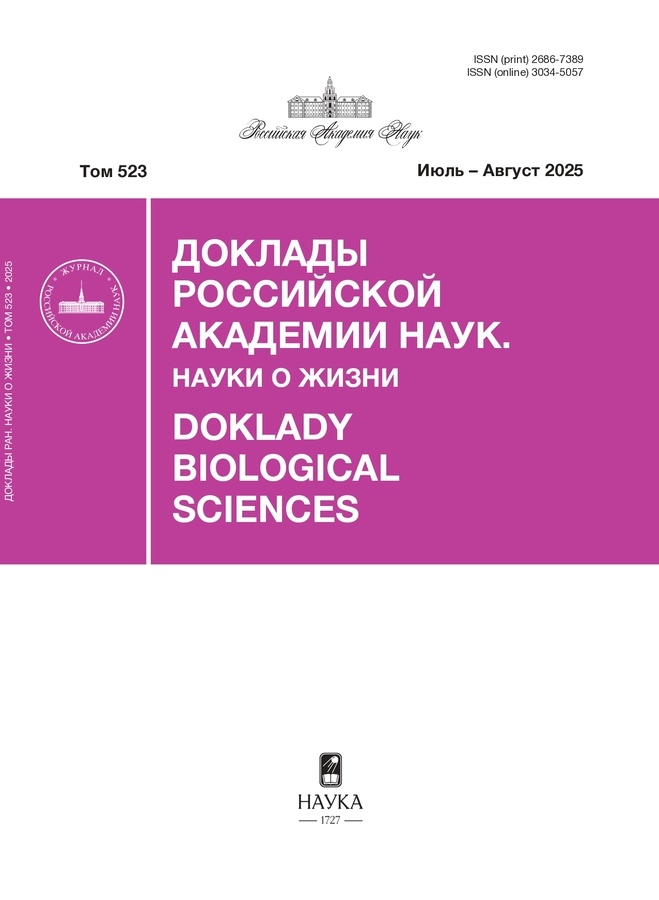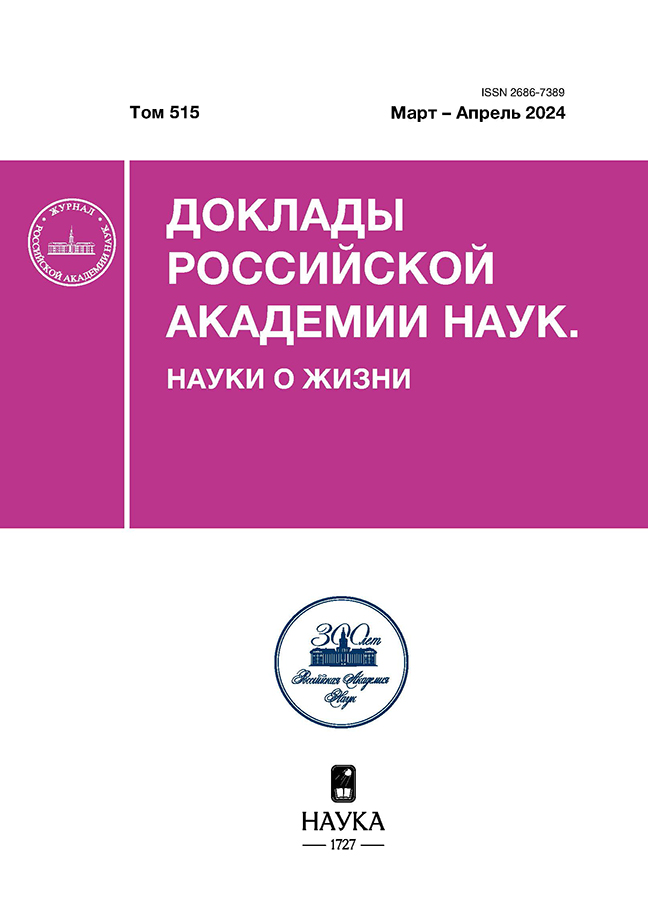Модульные нанотранспортеры, способные вызывать внутриклеточную деградацию N-белка вируса SARS-CoV-2 в клетках А549 с временной экспрессией этого белка, слитого с флуоресцентным белком mRuby3
- Авторы: Храмцов Ю.В.1, Уласов А.В.1, Лупанова Т.Н.1, Георгиев Г.П.1, Соболев А.С.1,2
-
Учреждения:
- Институт биологии гена Российской академии наук
- Московский государственный университет им. М. В. Ломоносова
- Выпуск: Том 515, № 1 (2024)
- Страницы: 45-48
- Раздел: Статьи
- URL: https://cijournal.ru/2686-7389/article/view/651440
- DOI: https://doi.org/10.31857/S2686738924020085
- EDN: https://elibrary.ru/WFGUMP
- ID: 651440
Цитировать
Полный текст
Аннотация
Созданы модульные нанотранспортеры (МНТ), содержащие антителоподобную молекулу, монободи, к N-белку вируса SARS-CoV-2, а также аминокислотную последовательность, привлекающую Е3-лигазу Keap1 (Е3BP). В данный МНТ также был введен сайт отщепления E3BP-монободи от МНТ в кислых эндоцитозных компартментах. Показано, что данное отщепление эндосомной протеазой катепсином В приводит к увеличению сродства E3BP-монободи к N-белку в 2.7 раза. На клетках А549 с временной экспрессией N-белка, слитого с флуоресцентным белком mRuby3, было показано, что инкубация с МНТ приводит к достоверному уменьшению флуоресценции mRuby3. Предполагается, что разработанные МНТ могут служить основой для создания новых противовирусных препаратов против вируса SARS-CoV-2.
Ключевые слова
Полный текст
Об авторах
Ю. В. Храмцов
Институт биологии гена Российской академии наук
Автор, ответственный за переписку.
Email: alsobolev@yandex.ru
Россия, Москва
А. В. Уласов
Институт биологии гена Российской академии наук
Email: alsobolev@yandex.ru
Россия, Москва
Т. Н. Лупанова
Институт биологии гена Российской академии наук
Email: alsobolev@yandex.ru
Россия, Москва
Г. П. Георгиев
Институт биологии гена Российской академии наук
Email: alsobolev@yandex.ru
академик
Россия, МоскваА. С. Соболев
Институт биологии гена Российской академии наук; Московский государственный университет им. М. В. Ломоносова
Email: alsobolev@yandex.ru
член-корреспондент
Россия, Москва; МоскваСписок литературы
- Clercq E.D., Li G. // Clin Microbiol Rev. 2016. V. 29. P. 695–747.
- Gebauer M., Skerra A. // Annu Rev Pharmacol Toxicol. 2020. V. 60. P. 391-415.
- Shipunova V.O., Deyev S.M. // Acta Naturae. 2022. V. 14. № 1(52). P. 54–72.
- Tolmachev V.M., Chernov V.I., Deyev S.M. // Russ Chem Rev. 2022. V. 91. № 3. RCR5034
- Surjit M., Lal S.K. // Infect Genet Evol. 2008. V. 8. P. 397–405.
- Wu C., Zheng M. // Preprints. 2020. 2020020247.
- Prajapat M., Sarma P., Shekhar N., et al. // Indian J Pharmacol. 2020. V. 52. P. 56.
- Du Y., Zhang T., Meng X., et al. // Preprints. 2020. doi: 10.21203/rs.3.rs-25828/v1.
- Khramtsov Y.V., Ulasov A.V., Lupanova T.N., et al. // Dokl Biochem Biophys. 2023. V. 510. P. 87–90.
- Lu M., Liu T., Jiao Q. et al. // Eur J Med Chem. 2018. V. 146. P. 251–259.
- Fulcher L.J., Hutchinson L.D., Macartney T.J., et al. // Open biology. 2017. V. 7. 170066.
- Slastnikova T.A., Rosenkranz A.A., Khramtsov Y.V., et al. // Drug Des Devel Ther. 2017. V. 11. P. 1315–1334.
- Khramtsov Y.V., Ulasov A.V., Lupanova T.N., et al. // Dokl Biochem Biophys. 2022. V. 506.
- Kern H.B., Srinivasan S., Convertine A.J., et al. // Mol Pharmaceutics. 2017. V. 14(5). P. 1450–1459.
- Wang S., Dai T., Qin Z., et al. // Nat. Cell Biol. 2021. V. 23. P. 718–732.
Дополнительные файлы













